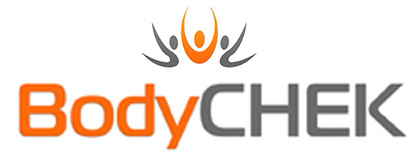Signs of over training include:
- Resting heart rate five beats per minute above or below normal (base)
- Unintentional or unexplained reduction in bodyweight of 3% or more
- Reduction in appetite
- Poor sleep quality for two days in a row or more
- Prolonged fatigue
- Muscle and bone soreness or joint ache
- Low motivation, attitude and confidence to training
So what can you do to optimise recovery?
Eat high quality organic foods in accordance with your metabolic type®. Organic foods contain considerably more nutrients than non-organic foods (4) and give your body the building blocks they need to recover. Eating right for your metabolic type® (see glossary), allows for optimum function (including regeneration) of all cellular processes. Food is the building blocks for your body’s structures. If you eat a low quality diet in the wrong proportions of macronutrients, you’ll have weaker muscles, connective tissues and bones. You’ll also have blood sugar imbalances, which lead to a stress response in the body, which leads to a reduction in growth hormone levels, which are required for recovery and regeneration of tissues.
Remain fully hydrated. Most athletes will need a minimum of 0.03 litres of good quality water per kilogram of body weight. For instance, a 50kg woman would need a minimum of 1.5litres (0.03 x 50 =1.5) per day. There are hundreds of thousands of biochemical reactions that take in the human body every second and they all require water.
Ensure adequate sleep. Adequate sleep means getting around 8-9 hours of sleep per night and for elite athletes possibly 9-10 hours. Sleep times are crucial too. Growth hormones in the body peak around 9.30pm-10.30pm and therefore it is essential that you are asleep by 10-10.30pm each night to maximise your recovery. Our hormonal systems are tied into the movement of the sun (rise and fall) and going to bed late and getting up late will not compensate for missing the growth hormone window. Sleep in a totally dark room. Light hitting the skin has been shown to increase stress hormones, which are antagonistic to anabolic (growth) hormones.
Passive rest is when you take days off and do no physical activity. These can be crucial following very gruelling training mesocycles, preparing to peak or when the resting heart rate is five beats per minute above the base level.
Active rest is when you train, but at a lower intensity than normal or a different form of training that is different from your event or normal training routine. Active rest is often used post-event, for instance light jogging to aid the removal of metabolic waste from the muscles. Another example would be a boxer going for a swim.
Rest days are crucial physiologically, psychologically and emotionally. Passive or active rest can be used on rest days. There should be at least one day per week where an athlete has a rest day.
Post event or post training recovery should include:
A cool down, normally involving low intensity exercise such as light jogging, swimming or cycling – this aids the removal of metabolic waste from the tissues.
- Rehydration with good quality mineral water – to replace lost fluid
- A meal or snack containing protein, fats and carbohydrates – to replace lost nutrients. A meal or snack of around 10-15% higher in carbohydrates than normal will help to replenish muscle glycogen, as well as regeneration of muscle tissue.
- Ice bath or contrast shower – to reduce inflammation of tissue damage and aid in the release of metabolic waste.
- Sports massage – to help remove metabolic waste, relax the muscles, reduce muscular tone, release trigger points and improve digestive function. A massage is recommended at least once or twice per week.
- Meditation techniques can be very useful to perform especially before bed. Meditation helps to stimulate the growth hormones of the body and aid repair and tissue regeneration.
Stretching should be performed to prevent shortening of muscles and therefore avoiding sport specific muscle imbalances. Stretching should be performed four hours after the event as metabolic waste continues to be released for up to four hours post exercise. Stretching should only be performed on tight or facilitated muscles, so a good understanding of your body’s muscle balance is crucial.
Failure to recover adequately will greatly increase your likelihood of injury!
Further information can be found in my book, “Anatomy of Sports Injuries for Training and Rehabilitation”.
